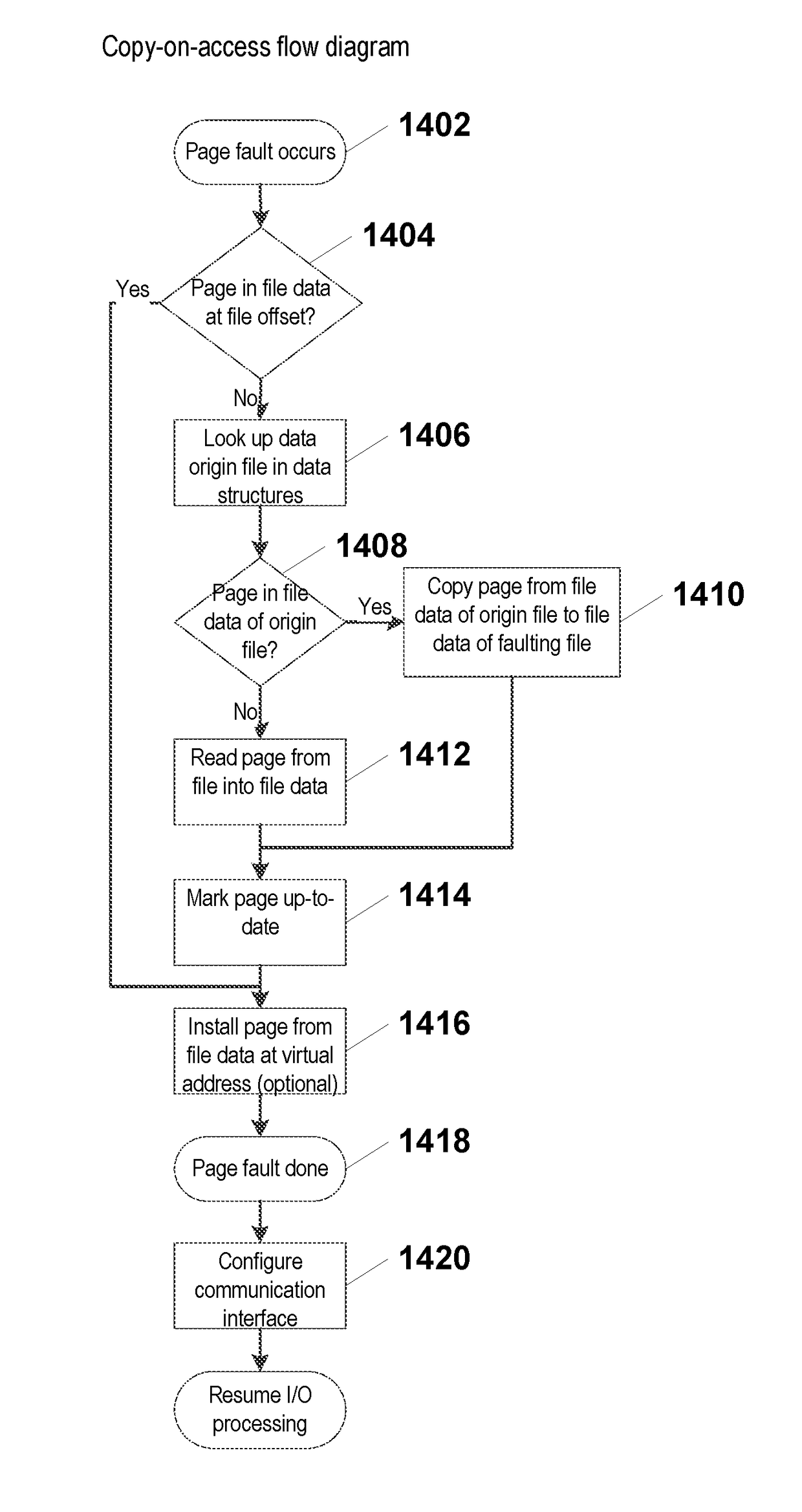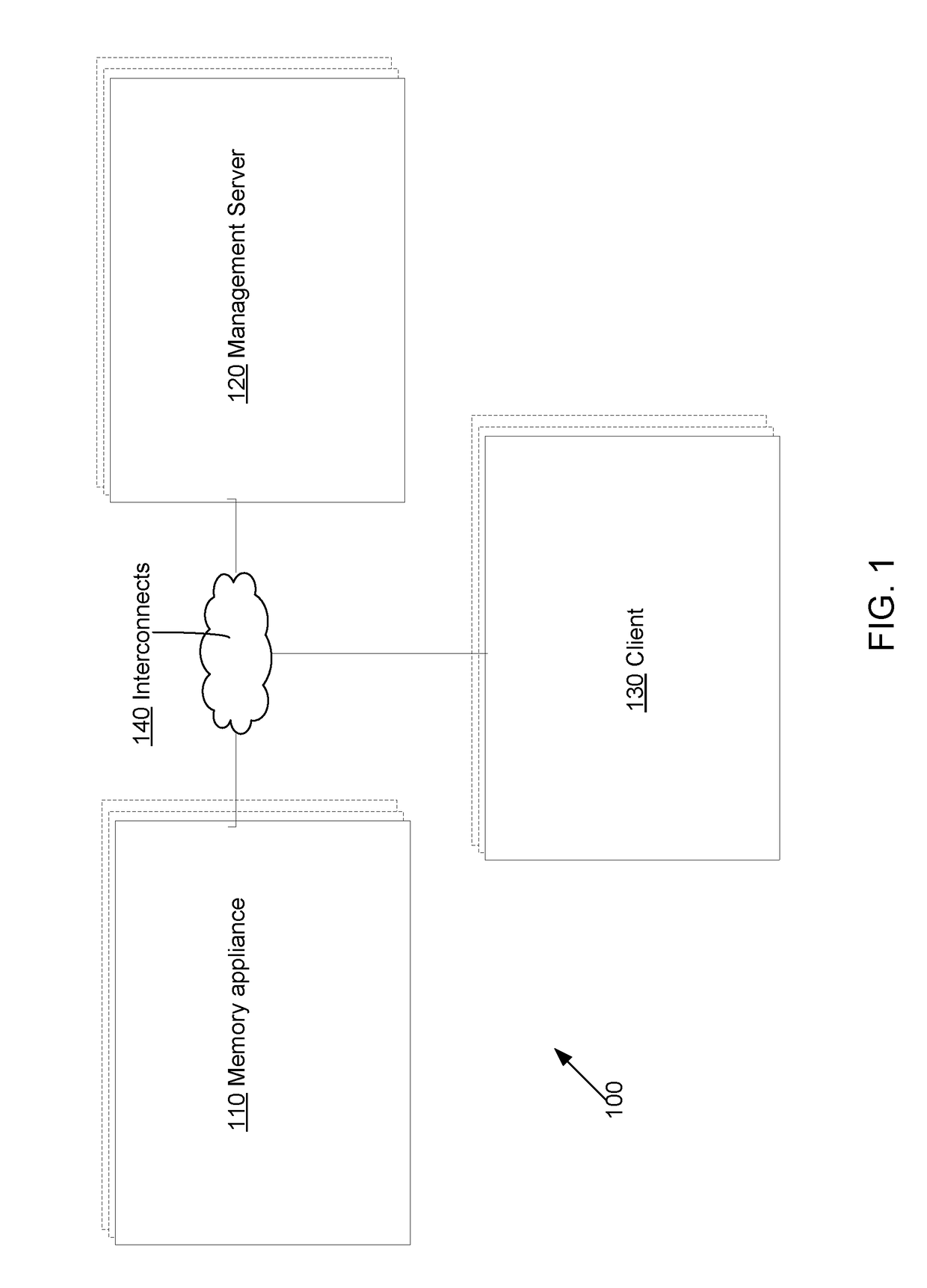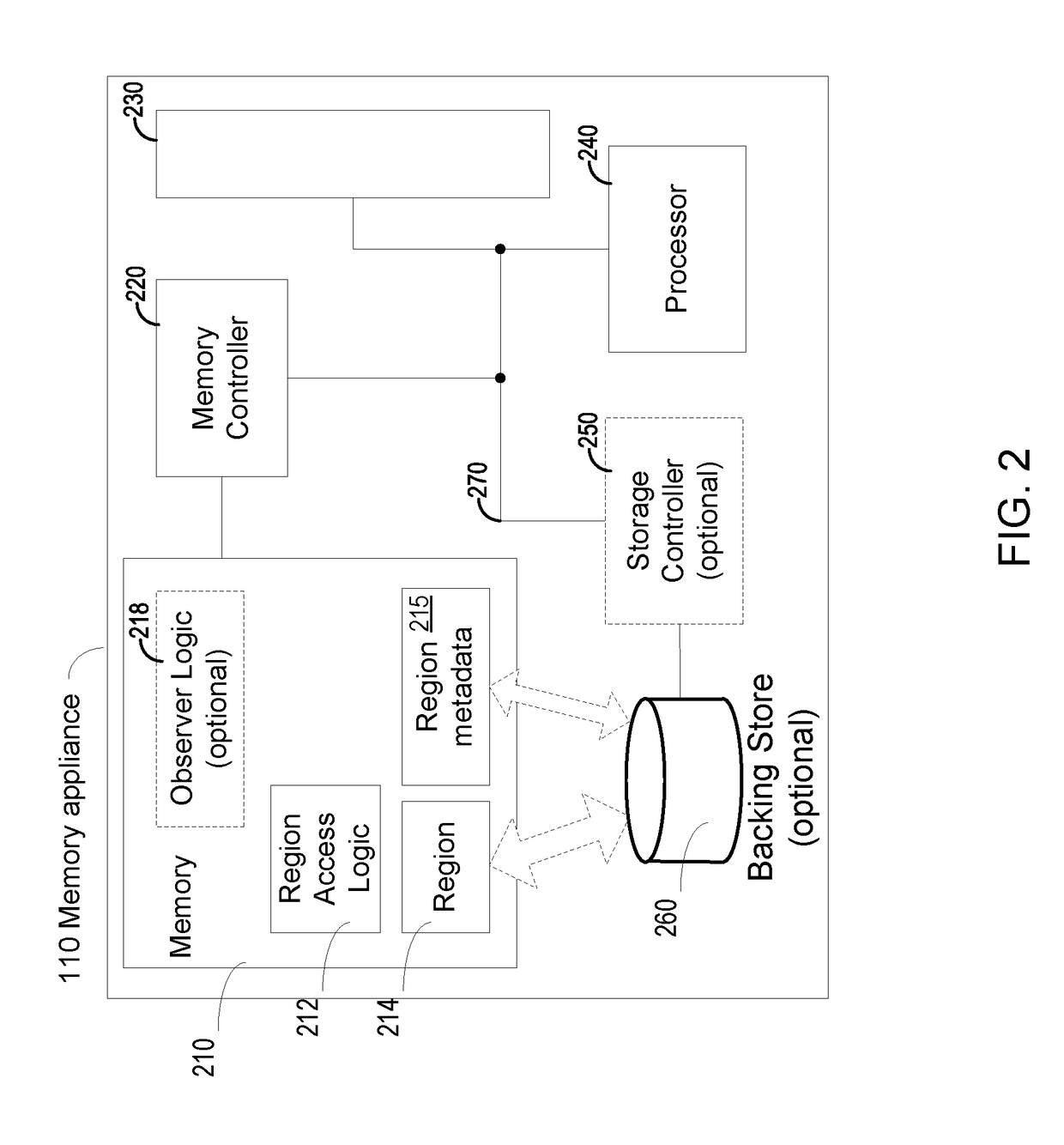Local primary memory as CPU cache extension
a primary memory and cpu cache technology, applied in the direction of instruments, input/output to record carriers, climate sustainability, etc., can solve the problems of limiting the working set of tasks performed by the computing system, limiting the working set of tasks, and having a larger secondary memory capacity
- Summary
- Abstract
- Description
- Claims
- Application Information
AI Technical Summary
Problems solved by technology
Method used
Image
Examples
Embodiment Construction
[0029]Many protocols are designed to provide on-demand access to data. For example, a SCSI over Fibre Channel protocol is designed to allow a processor to handle incoming SCSI commands and retrieve the desired data, such as by reading from disk and / or retrieving the data over a network (such as with a Redundant Array of Independent Disks (RAID) array head). Other protocols, such as protocols that support client-side memory access, are designed to bypass the processor and retrieve the desired data directly from memory, such as with the Remote Direct Memory Access (RDMA) protocol over Infiniband. The latter approach takes advantage of the latency improvements derived from bypassing the processor, but sacrifices the flexibility of being able to use the processor to access data that is not included in the memory. Some hardware implementations of memory access protocols supporting client-side memory access enable the ability to specify portions, such as pages, of a registered area of mem...
PUM
 Login to View More
Login to View More Abstract
Description
Claims
Application Information
 Login to View More
Login to View More - R&D
- Intellectual Property
- Life Sciences
- Materials
- Tech Scout
- Unparalleled Data Quality
- Higher Quality Content
- 60% Fewer Hallucinations
Browse by: Latest US Patents, China's latest patents, Technical Efficacy Thesaurus, Application Domain, Technology Topic, Popular Technical Reports.
© 2025 PatSnap. All rights reserved.Legal|Privacy policy|Modern Slavery Act Transparency Statement|Sitemap|About US| Contact US: help@patsnap.com



